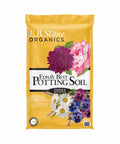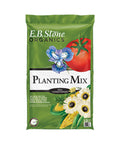Details
Edible Qualities
This gourd plant produces vigorous vines that can reach up to 20 feet in length and are well-suited for growing on a trellis or fence. It is commonly grown for its edible young fruits, which should be harvested when about 6 inches long and still soft. At this stage, the gourds have a mild, pleasant taste.
The fruit are most often used in the following ways:
- Eating When Cooked/Prepared
- Cooking
- Baking
- Freezing
For Sponges
When fully grown, the gourds turn brown and become lightweight, indicating they are ready to be used as natural sponges. To prepare them, peel off the skin, rinse out the seeds, soak the interior if needed, and allow it to dry fully before use.
Care
Planting & Growing
Luffa Sponge (Luffa aegyptiaca) is a fast-growing, warm-season vine that can reach 10 to 12 feet or more at maturity, with a spread of 3 to 6 feet depending on training and support. When grown in rows, individual plants should be spaced about 3 feet apart to provide ample room for the vines to spread. It is an annual plant, meaning it completes its life cycle in a single growing season.
This vining plant is best grown in full sun and requires warm temperatures throughout the season to reach maturity. Luffa prefers rich, well-drained soil with consistent moisture, but it will not tolerate standing water. It adapts to a range of soil pH levels and is moderately tolerant of urban conditions. For best results, grow on a trellis, fence, or other sturdy vertical structure to promote straight fruits and reduce disease risk. Mulching around the base helps retain moisture and suppress weeds. Although native to Asia and Africa, it can be grown successfully in many temperate regions with a long growing season.
Luffa fruits are edible when young—harvested at 4–6 inches long, they have a mild zucchini-like flavor and can be stir-fried or added to soups and stews. Once fully mature and dried on the vine, the fibrous interior can be peeled, cleaned, and used as a natural sponge, popular for bathing, exfoliating, and household cleaning. Luffa is best suited for vegetable gardens but can be grown in large containers with adequate support. In pots, be sure to water frequently and provide a strong trellis to support the vine’s growth and weight.




































